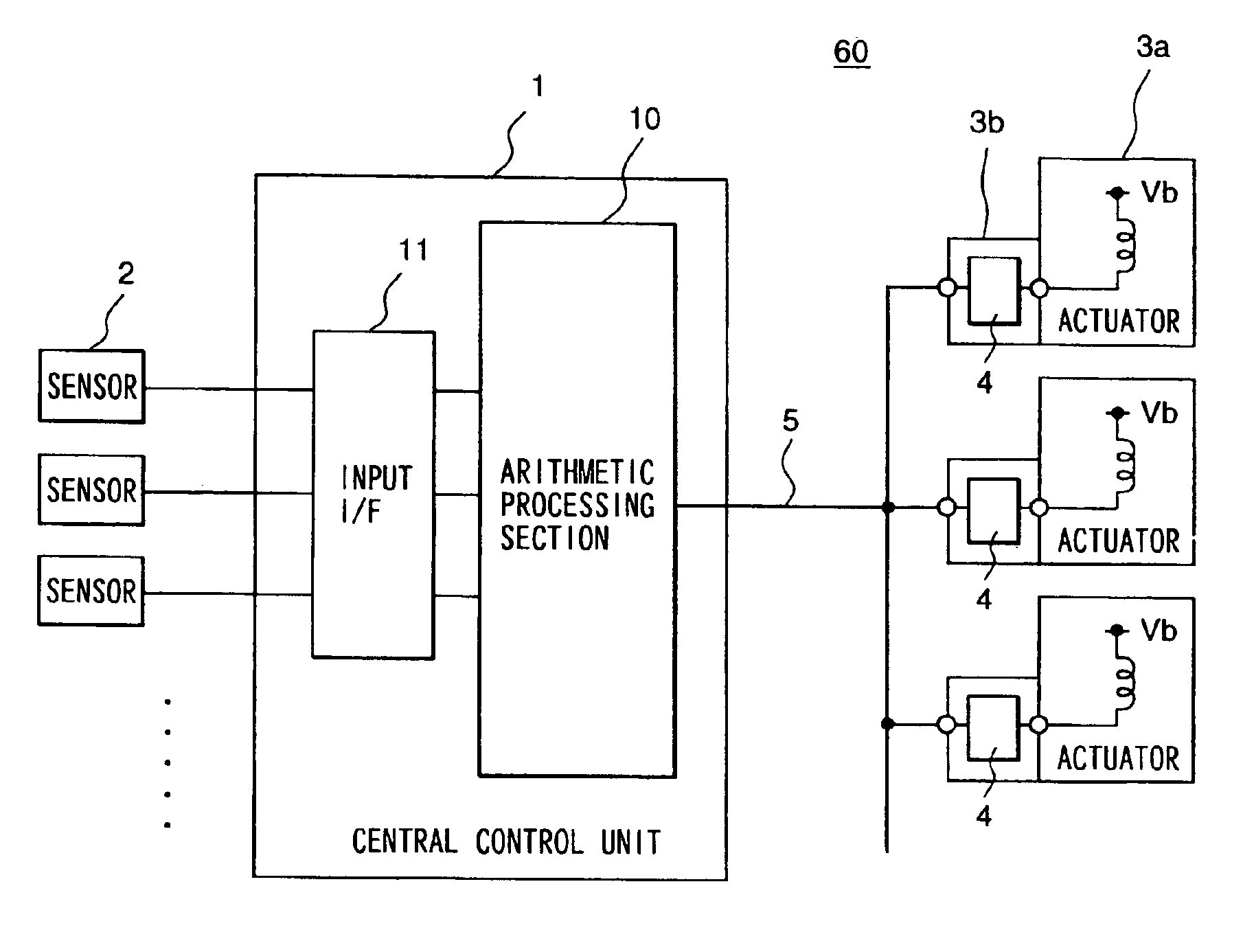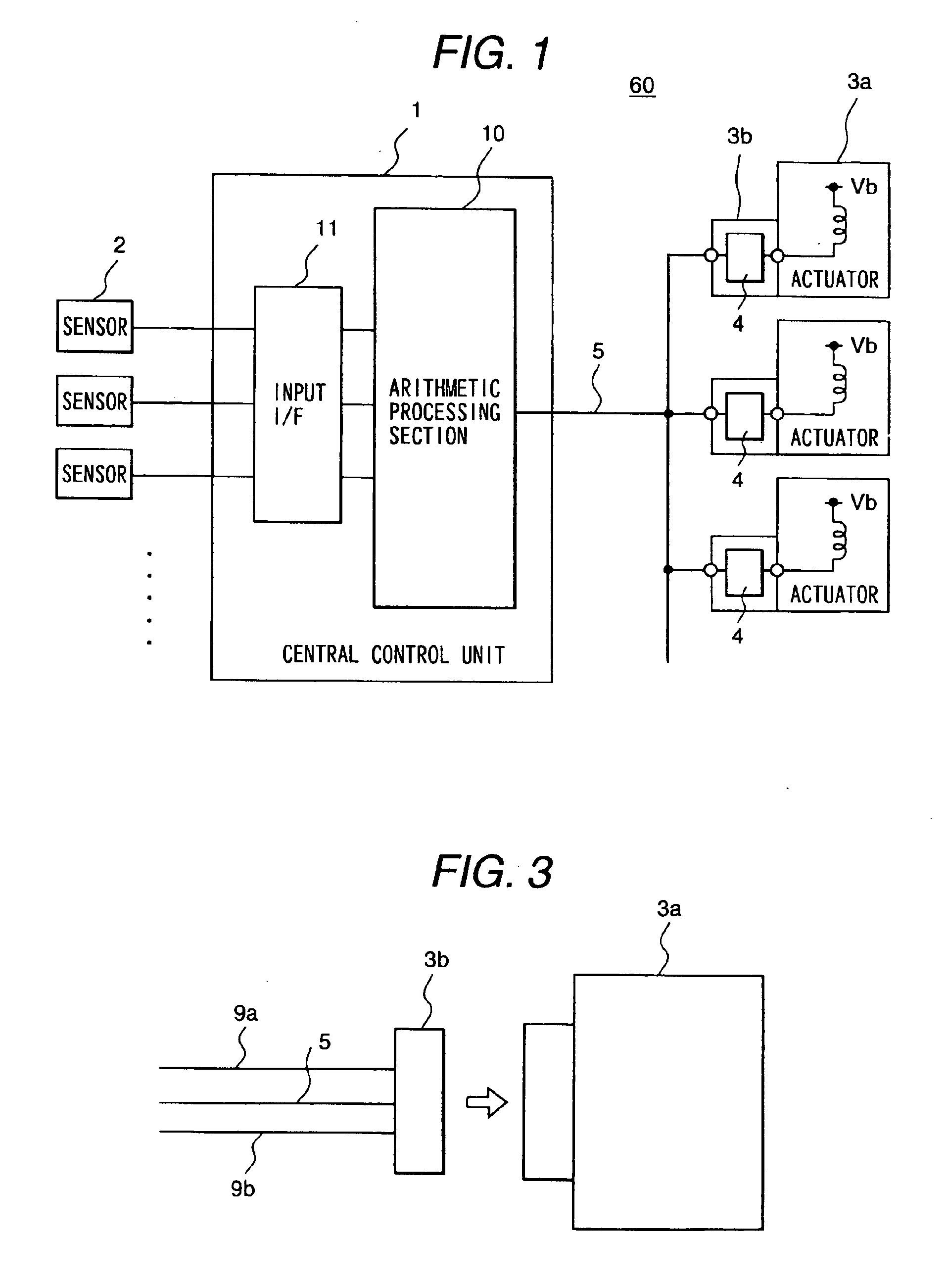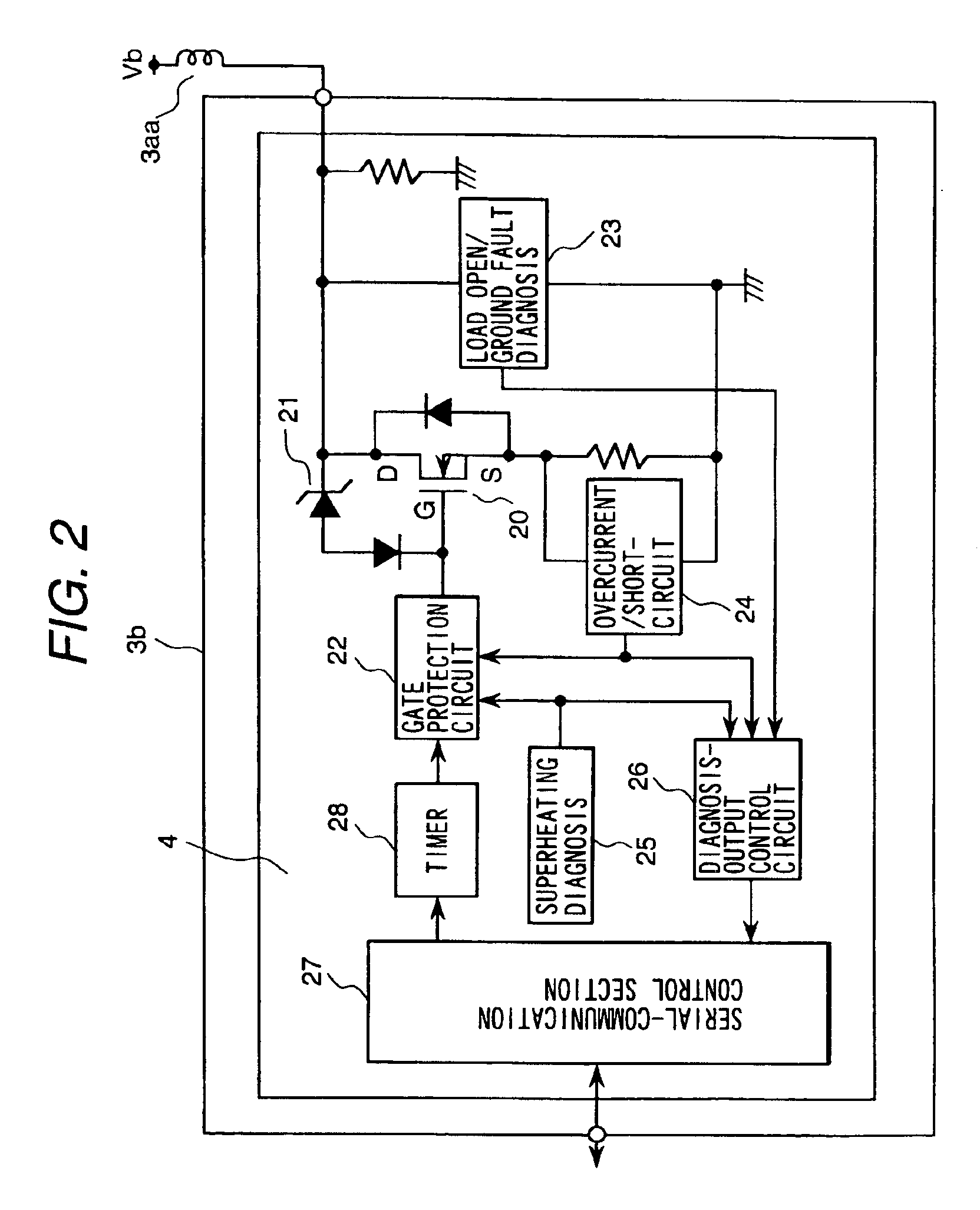Vehicle control system and automobile using the same
a control system and vehicle technology, applied in the field of control systems, can solve the problems of increasing the calorific value of the electronic control unit b>1/b>′, increasing the manufacturing cost and the cost of the whole vehicle control system in its turn, and reducing the cost of the control system
- Summary
- Abstract
- Description
- Claims
- Application Information
AI Technical Summary
Benefits of technology
Problems solved by technology
Method used
Image
Examples
first embodiment
[0035]FIGS. 1 to 4 show the vehicle control system of the first embodiment, in which FIG. 1 shows a block diagram of the vehicle control system.
[0036]The vehicle control system 60 is constituted of an electronic control unit (ECU) 1, a plurality of sensors 2, a plurality of actuators 3a, and a plurality of actuator drivers 4, in which predetermined operations are performed by the electronic control unit in the engine room of a vehicle in accordance with signals of the sensors 2 set in the engine room to drive the actuators 3a serving as loads through the actuator drivers 4.
[0037]The electronic control unit 1 is constituted of an input interface (input I / F) 11 and an arithmetic processing section 10. The actuators 3a are driven by the actuator drivers 4 and the actuator drivers 4 are set to the actuator-3a side separately from the electronic control unit 1 and dispersed correspondingly to the actuators 3a.
[0038]The actuator drivers 4 are built in connectors 3b connected to the actua...
second embodiment
[0054]FIG. 5 shows a block diagram of the vehicle control system of the
[0055]The vehicle control system 60A has the same configuration as the vehicle control system 60 of the first embodiment except the configuration of signal lines between the arithmetic processing section 10 of an electronic control unit (ECU) 1A and actuator drivers 4A. Therefore, differences between the first and second embodiments are mainly described below.
[0056]The actuator drivers 4A of the vehicle control system 60A are set to the actuator-3a side separately from the electronic control unit 1A and dispersed in connectors 3b correspondingly to the actuators 3a. Moreover, the actuator drivers 4A respectively have a self-diagnosis section, a self-protection section, and a communication control section and made independent so as to make it possible to construct an actual system even if the drivers 4A are set to the outside of the electronic control unit 1A.
[0057]Then, the arithmetic processing section 10 of the...
third embodiment
[0058]FIGS. 6 and 7 show the vehicle control system of the third embodiment, in which FIG. 6 shows a block diagram of the vehicle control system.
[0059]Because the vehicle control system 60B has the same configuration as those of the vehicle control systems of the first and second embodiments except the configuration of transceiving signals between the arithmetic processing unit 10 of an electronic control unit (ECU) 1B and actuator drivers 4B, difference points between the third embodiment on one hand and the first and second embodiments on the other are mainly described below.
[0060]The actuator drivers 4B of the vehicle control system 60 are set to the actuator-3a side separately from the electronic control unit 1B and dispersed in connectors 3b correspondingly to the actuators 3a. Moreover, the actuator drivers 4B respectively have a self-diagnosis section, a self-protection section, a timer section, a radio communication control section, and an antenna and are made independent so...
PUM
 Login to View More
Login to View More Abstract
Description
Claims
Application Information
 Login to View More
Login to View More - R&D
- Intellectual Property
- Life Sciences
- Materials
- Tech Scout
- Unparalleled Data Quality
- Higher Quality Content
- 60% Fewer Hallucinations
Browse by: Latest US Patents, China's latest patents, Technical Efficacy Thesaurus, Application Domain, Technology Topic, Popular Technical Reports.
© 2025 PatSnap. All rights reserved.Legal|Privacy policy|Modern Slavery Act Transparency Statement|Sitemap|About US| Contact US: help@patsnap.com



